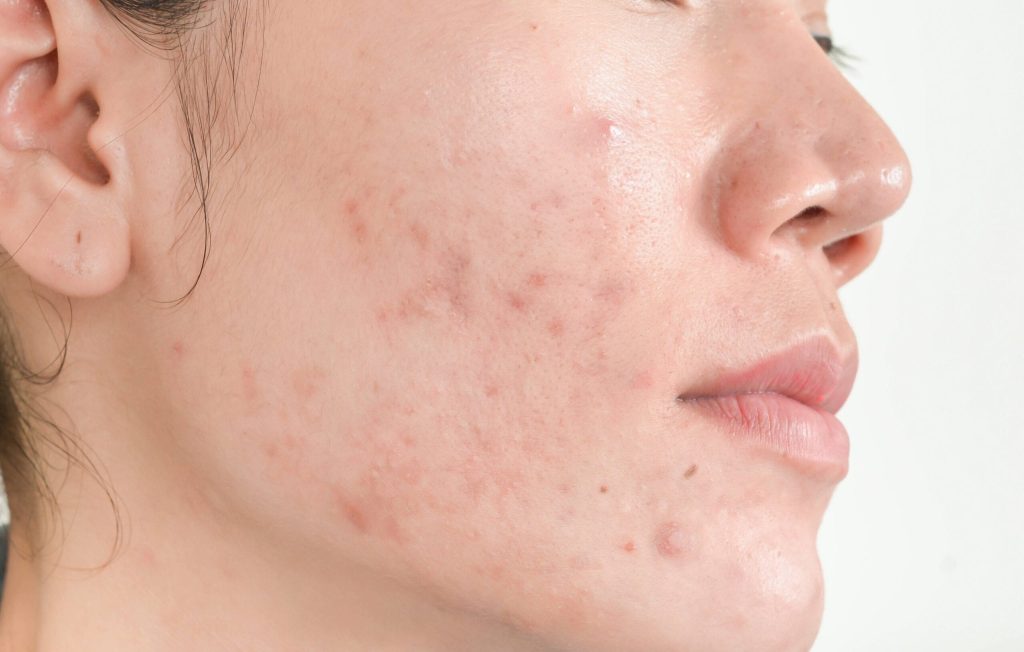Introduction
Acne can be a challenging skin condition that affects people of all ages. While it’s most commonly associated with adolescence, acne can persist well into adulthood. If you’re dealing with acne, you’re not alone, and there are numerous skin treatments available to help you clear it up and achieve clearer, healthier skin. In this blog, we will get to know about the five effective skin treatments to combat acne and regain your confidence.

Topical Acne Medications
Topical acne medications are some of the most commonly used treatments for mild to moderate acne. These medications, like ointments, serums, etc., are applied directly to the skin and work to target the root causes of acne, such as oil over-production, inflammation, and the proliferation of acne-causing bacteria. Here are some common types of topical acne medications:
- Benzoyl Peroxide: Benzoyl peroxide is an over-the-counter (OTC) medication that kills the bacteria that contribute to acne by reducing inflammation. It’s available in various forms, including gels, creams, and washes. Start with a minimal concentration and gradually increase it to prevent excessive dryness and irritation.
- Salicylic Acid: Salicylic acid is another OTC treatment that helps to exfoliate the skin, unclog skin pores, and reduce inflammation. It’s often found in cleansers, toners, and spot treatments.
- Prescription Topicals: For more severe acne cases, a dermatologist may prescribe stronger topical medications such as retinoids or combination products. Retinoids help to unclog pores, reduce inflammation, and promote skin cell turnover. They can be particularly effective but may cause initial dryness and sensitivity.
When using topical acne medications, consistency is key. Follow the instructions provided and be patient, as it may take several weeks to see significant improvements.
Chemical Peels
Chemical peels are another valuable tool in the fight against acne. A chemical peel involves the application of a chemical to the skin, which removes the uppermost layer of skin cells. This process encourages the growth of new, healthier skin and can help reduce acne scars and prevent new breakouts.
There are different types of chemical peels, varying from superficial to deep, and a dermatologist can determine which one is best suited for your skin type and acne severity. Superficial peels are often gentler and require minimal downtime, making them a popular choice for many individuals with acne.
Microdermabrasion
Microdermabrasion is a non-surgical skin procedure that uses an instrument to remove the top layer of skin and suction away dead skin cells and debris. This process can help unclog pores, reduce the appearance of acne scars, and promote a smoother complexion. Microdermabrasion is typically safe and well-tolerated by most skin types.
Multiple sessions are usually required to achieve the best results, and there is no downtime associated with this treatment. It’s important to follow proper skincare and sun protection after microdermabrasion to maintain the improvements and protect your skin from UV damage.
Laser and Light Therapies
Laser and light therapies have gained popularity as effective treatments for acne and acne scars. These treatments work by targeting the bacteria responsible for acne, reducing inflammation, and stimulating collagen production to improve skin texture. Here are some common laser and light therapies used for acne:
- Laser Resurfacing: Fractional laser resurfacing, such as fractional CO2 lasers, can help improve acne scars by removing skin cells that are damaged and promoting collagen production. This procedure may require some downtime for recovery.
- Blue Light Therapy: Blue light therapy kills the bacteria that cause acne, reducing their population and subsequently decreasing inflammation and breakouts. It’s a non-invasive treatment that can be used alone or in combination with other therapies.
- Intense Pulsed Light (IPL): IPL therapy helps treat both acne and acne scars by targeting pigment and stimulating collagen production. It’s especially beneficial for individuals with red or brown acne marks.
Consult with a dermatologist to determine the most suitable laser or light therapy for your specific acne concerns.
Chemical Injections
For stubborn, deep, and painful cystic acne lesions, a dermatologist may recommend intralesional injections. These injections typically contain corticosteroids, which help reduce inflammation and speed up the healing process. While not a long-term solution, corticosteroid injections can provide rapid relief from painful cysts and prevent them from leaving behind significant scars.
Conclusion
Acne can be a stubborn skin condition to deal with, but it’s important to remember that effective treatments are available. The right approach for you will depend on the severity of your acne, your skin type, and your individual needs. Consult with a dermatologist to create a unique and personalized treatment plan that may include a combination of the methods discussed above.
Remember that skincare is not one-size-fits-all, and what works for one person may not work for another. Be patient and consistent with your chosen treatments, and seek professional guidance if your acne persists or worsens. With the right skincare regimen and treatments, you can take control of your acne and achieve clearer, healthier skin.